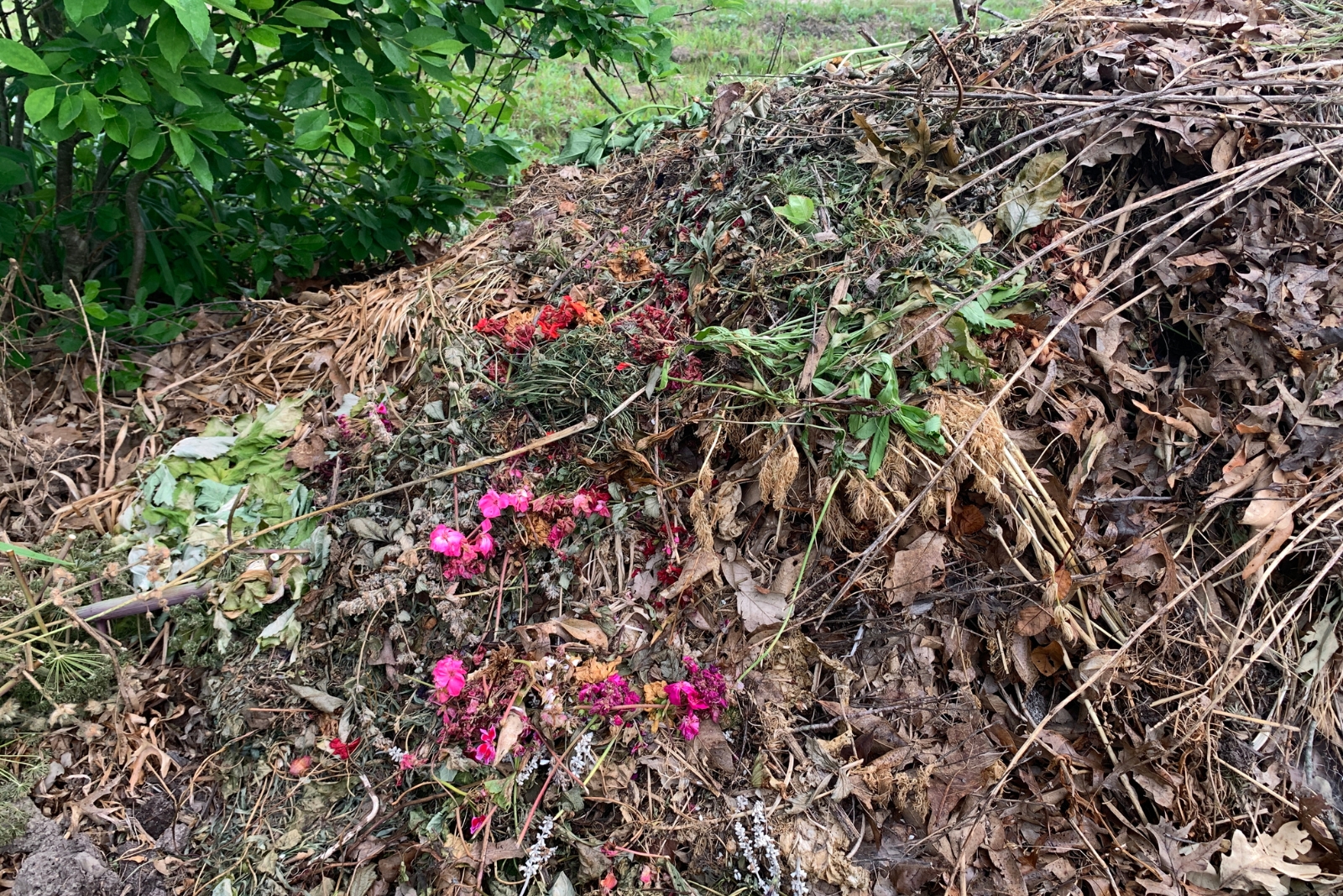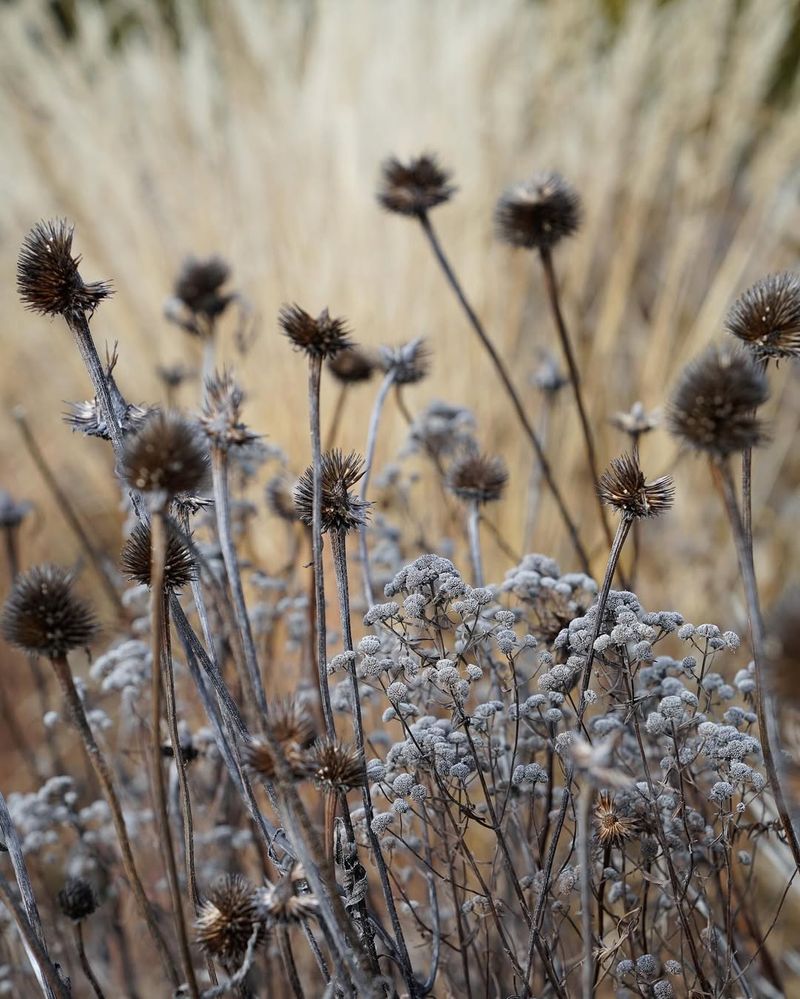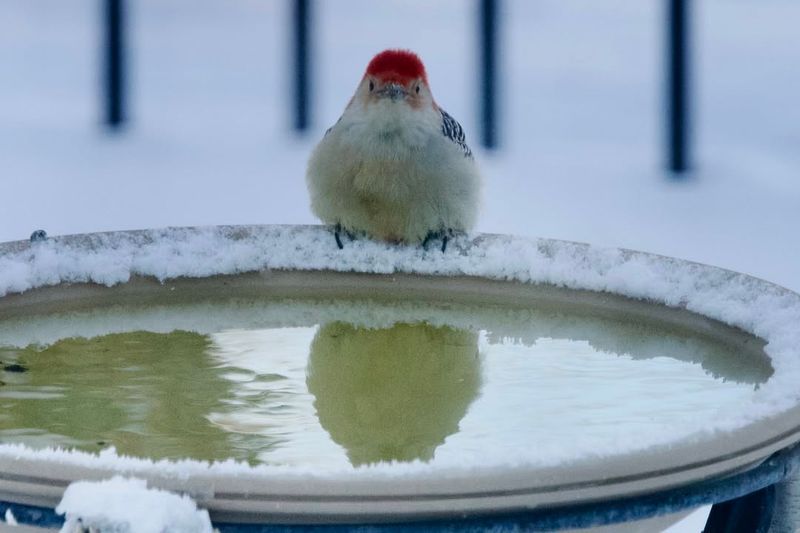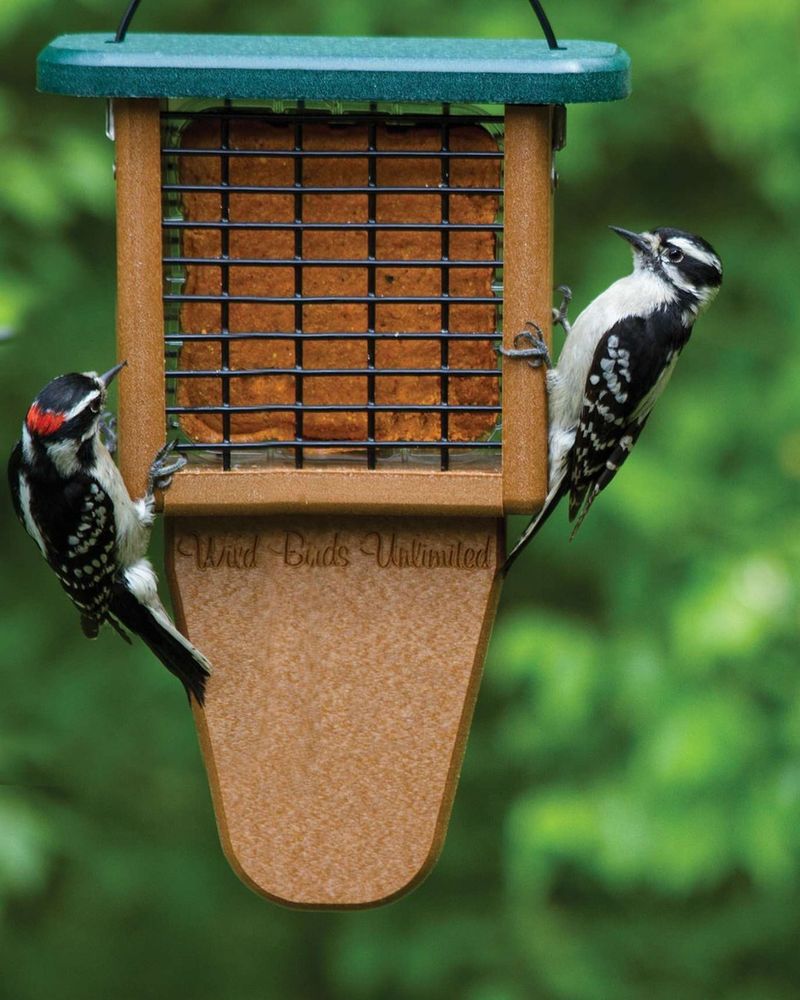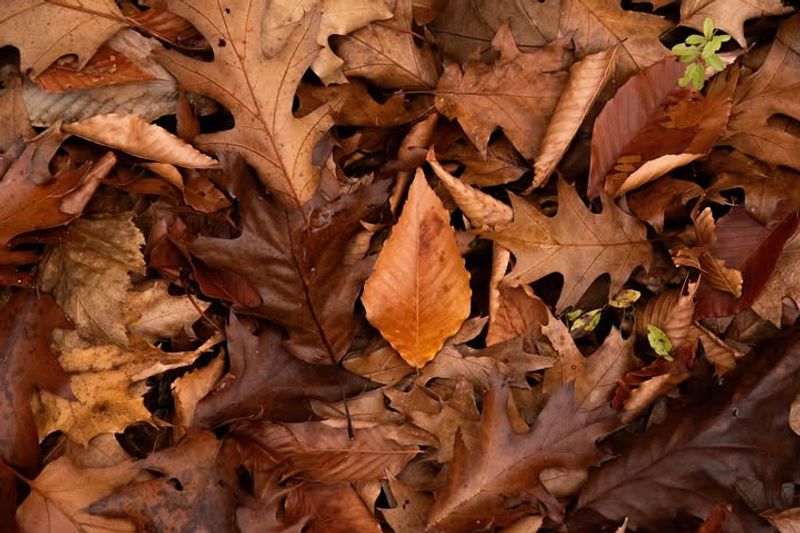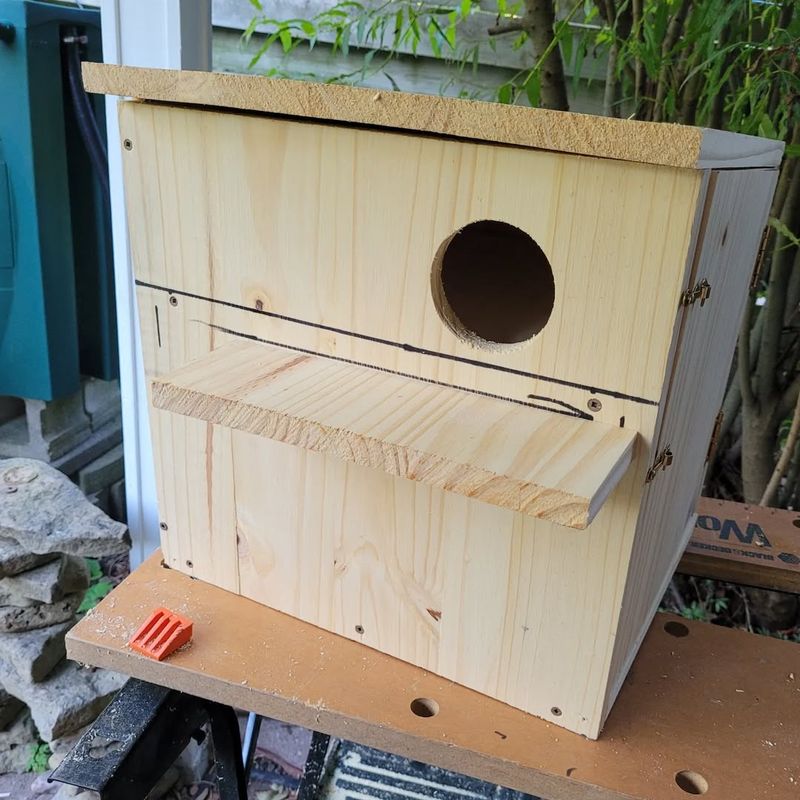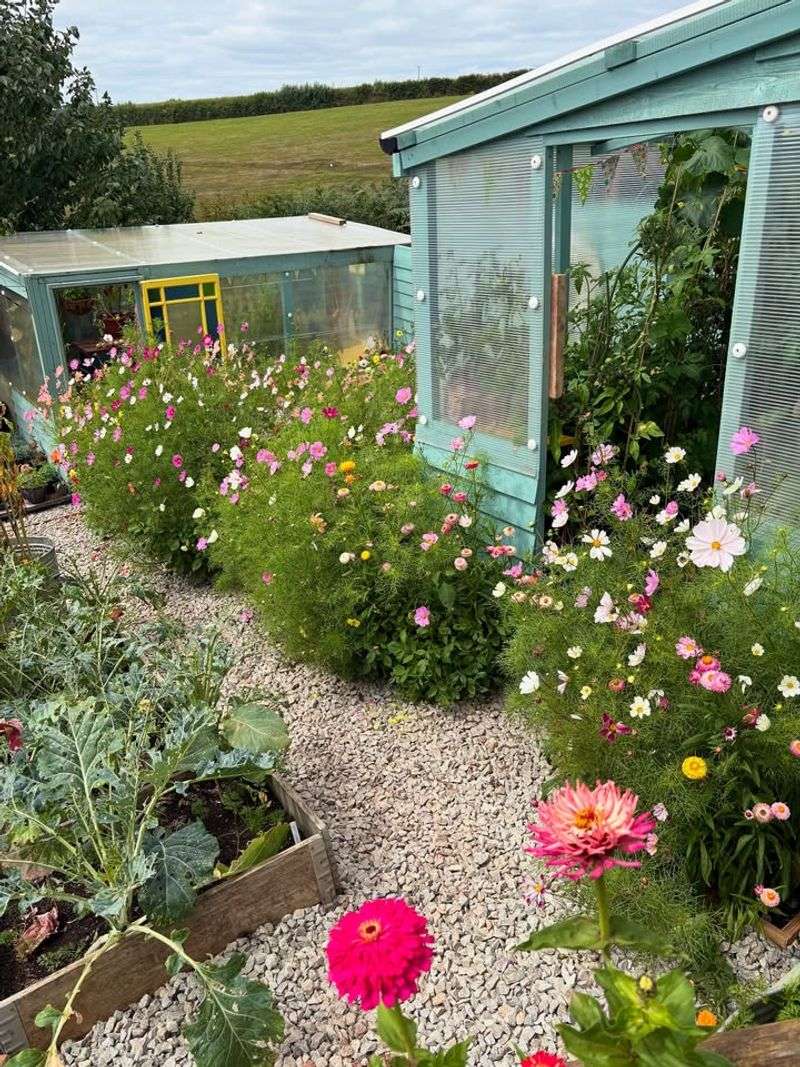November in Michigan brings cold winds and shorter days, but your garden can still be a haven for wildlife. Birds, squirrels, and other creatures need extra help finding food and shelter as winter approaches.
Making a few simple updates now can turn your yard into a lifeline for animals that call Michigan home.
1. Leave Seed Heads Standing
Cutting back all your perennials might make your garden look tidy, but it removes important food sources. Coneflowers, black-eyed Susans, and sunflowers produce seeds that birds love to eat throughout winter. Goldfinches, chickadees, and sparrows will visit daily to feast on these natural treats.
Dried flower heads also provide shelter for beneficial insects. By leaving them standing until spring, you’re supporting the entire food chain in your backyard ecosystem.
2. Install A Heated Bird Bath
Water becomes scarce when temperatures drop below freezing, yet birds still need to drink and bathe. A heated bird bath keeps water liquid even on the coldest Michigan days, attracting cardinals, blue jays, and woodpeckers to your yard. Place it near shrubs so birds can quickly escape to safety if predators appear.
Clean the bath regularly to prevent disease spread. Fresh water is just as important as food for winter bird survival.
3. Create Brush Piles For Shelter
Branches from fall pruning don’t belong in the trash—they make perfect wildlife hideouts. Stack them loosely in a corner of your yard to create a brush pile where rabbits, chipmunks, and ground-feeding birds can escape harsh weather and predators. Small mammals use these structures for nesting and protection during snowstorms.
Layer larger branches on the bottom with smaller twigs on top. The gaps between branches provide cozy, insulated spaces for creatures seeking refuge.
4. Plant Native Berry Bushes
November is actually an excellent time to plant dormant shrubs that will feed wildlife for years to come. Winterberry, serviceberry, and American cranberry bush produce fruits that birds and mammals devour during cold months. Cedar waxwings, robins, and even deer rely on these native plants when other food disappears.
Native species are adapted to Michigan’s climate and require less maintenance than exotic varieties. They’ll establish strong roots before spring growth begins.
5. Add Suet Feeders For High Energy
Woodpeckers, nuthatches, and chickadees need calorie-dense foods to survive freezing nights. Suet cakes provide the fat and protein these birds require to maintain their body heat. Hang feeders on tree trunks or poles where woodpeckers feel comfortable clinging and pecking.
Choose suet without artificial ingredients or fillers. You can even make your own by mixing lard with seeds, nuts, and dried fruit for a nutritious homemade treat.
6. Keep Fallen Leaves In Garden Beds
Raking every last leaf might seem responsible, but you’re actually removing crucial habitat. Toads, salamanders, and countless insects burrow into leaf litter to survive winter’s freeze. Butterflies like mourning cloaks and question marks hibernate as adults under this natural blanket.
Spread leaves around perennials and shrubs instead of bagging them. They’ll decompose by spring, enriching your soil while protecting overwintering wildlife throughout the coldest months.
7. Set Up A Squirrel Feeding Station
Squirrels work hard to gather enough food before winter arrives, and a dedicated feeding station keeps them from raiding bird feeders. Fill a platform feeder with corn, nuts, and sunflower seeds away from your bird feeding areas. Eastern gray squirrels and red squirrels will appreciate the easy meal source.
Watching squirrels stuff their cheeks and bury treasures provides entertainment on dreary November days. You’re also helping them build fat reserves for survival.
8. Build Or Clean Out Nest Boxes
Birds don’t just use nest boxes for raising babies—they roost inside them for warmth during winter nights. Clean out old nesting material from boxes used last spring to prevent parasite buildup. Chickadees, bluebirds, and even flying squirrels may huddle together in a single box when temperatures plummet.
Face box entrances away from prevailing winds. Adding a handful of wood shavings provides extra insulation without blocking the entrance hole completely.
9. Maintain A Wild Corner
Not every inch of your property needs to look manicured. Designating one area as a wild zone gives wildlife a safe space to forage and hide. Let native plants grow freely, fallen logs decay naturally, and leaf piles accumulate undisturbed. Opossums, skunks, and countless beneficial insects thrive in these mini wilderness patches.
Wild corners also reduce your maintenance workload while boosting biodiversity. Nature knows how to take care of itself when given the opportunity.

